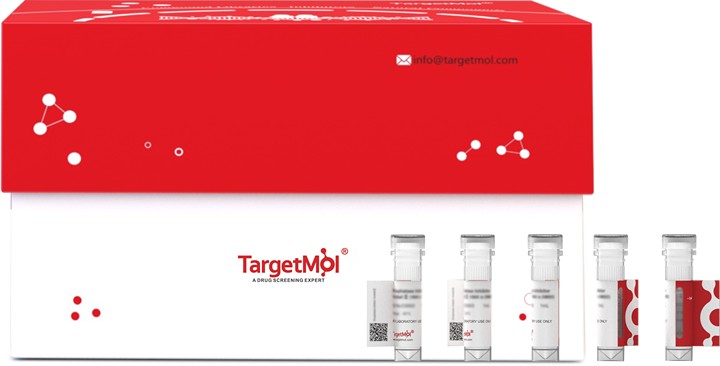Shopping Cart
- Remove All
 Your shopping cart is currently empty
Your shopping cart is currently empty
FGF-16 Protein, Human, Recombinant (CHO) is expressed in CHO Cells. The accession number is O43320.

| Pack Size | Price | Availability | Quantity |
|---|---|---|---|
| 5 μg | $71 | 7-10 days | |
| 10 μg | $113 | 7-10 days | |
| 20 μg | $178 | 7-10 days | |
| 50 μg | $339 | 7-10 days | |
| 100 μg | $557 | 7-10 days | |
| 200 μg | $919 | 7-10 days | |
| 500 μg | $1,790 | 7-10 days | |
| 1 mg | $2,970 | 7-10 days |
| Biological Activity | Measured in a cell proliferation assay using 3T3 mouse fibroblast cell, the ED 50 for this effect is < 20.0 ng/ml. |
| Description | FGF-16 Protein, Human, Recombinant (CHO) is expressed in CHO Cells. The accession number is O43320. |
| Species | Human |
| Expression System | CHO Cells |
| Tag | Tag Free |
| Accession Number | O43320 |
| Synonyms | Fibroblast Growth Factor-16,FGFG,FGF16 |
| Construction | Ala2-Arg207 |
| Protein Purity | > 95% as determined by SDS-PAGE; > 95% as determined by HPLC |
| Molecular Weight | ~23 kDa (Reducing conditions) |
| Endotoxin | < 0.2 EU/μg of protein as determined by the LAL method. |
| Formulation | Lyophilized from a 0.2 μm filtered solution of 20 mM PB, 150 mM NaCl, 5 mM EDTA, pH 7.5. |
| Reconstitution | Reconstitute the lyophilized protein in sterile deionized water. The product concentration should not be less than 100 μg/ml. Before opening, centrifuge the tube to collect powder at the bottom. After adding the reconstitution buffer, avoid vortexing or pipetting for mixing. |
| Stability & Storage | Upon receiving, this product remains stable for up to 6 months at lower than -70°C. Upon reconstitution, the product should be stable for up to 1 week at 4°C or up to 3 months at -20°C. For long term storage it is recommended that a carrier protein (example 0.1% BSA) be added. Avoid repeated freeze-thaw cycles. |
| Shipping | In general, Lyophilized powders are shipping with blue ice. Solutions are shipping with dry ice. |
| Research Background | Fibroblast Growth Factor-16 (FGF-16) is a heparin binding growth factor, a member of the FGF family. All FGF family members are heparinbinding growth factors with a core 120 amino acid (aa) FGF domain that allows for a common tertiary structure. FGF family members possess broad mitogenic and cell survival activities, and are involved in a variety of biological processes, including embryonic development, cell growth, morphogenesis, tissue repair, tumor growth and invasion. The rat homolog is predominantly expressed in embryonic brown adipose tissue and has significant mitogenic activity, which suggests a role in proliferation of embryonic brown adipose tissue. FGF-16 is most similar to FGF-9 (73 % amino acid identity). The protein sequence of human FGF-16 displays 98.6% identity with rat FGF-16. Chimpanzee FGF-16 (207 amino acids), chicken FGF-16 (207 amino acids), and zebrafish FGF-16 (203 amino acids) show 100 %, 89.9 %, and 79.2 % total amino acid identity with human FGF-16. |

Copyright © 2015-2025 TargetMol Chemicals Inc. All Rights Reserved.